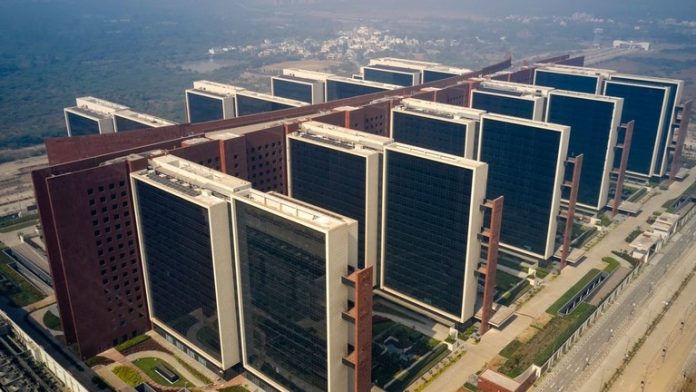NewsRescue
Surat Diamond Bourse, a new precious stone cutting and polishing hub in Surat, Gujarat, was launched on Sunday by Indian Prime Minister Narendra Modi. The new facility is planned to take over as the country’s main diamond trading centre from the Bharat Diamond Bourse in Mumbai.
The Surat bourse is not only India’s largest international diamond and jewellery trade hub, but it is also often regarded as the world’s largest – for both rough and polished diamonds, as well as finished products. The bourse consists of nine 15-story towers and about 4,500 offices, as well as a customs clearance house and bank, safe vaults, retail, fitness, and conference facilities.
CNN published photographs of the Surat bourse that it claimed to have gotten exclusively earlier this year, noting that the new structure is larger than the Pentagon. The bourse is spread on 14 hectares (35 acres) of land and has a floor area of around 660,000 square metres (7.1 million square feet).
It is located within the Diamond Research and Mercantile City, an upcoming 810-hectare business district in Surat modelled after the Gujarat International Finance Tec-City, or Gift City, another Modi government project aimed at creating a global financial and IT services hub on par with the world’s oldest financial centres such as Dubai, Singapore, and Shanghai.
Modi said the Surat Diamond Bourse is a sign of India’s new power during the inaugural event on Sunday. Aside from the diamond hub, he also inaugurated a new terminal at Surat Airport, which will be capable of handling 1,200 domestic and 600 international passengers during peak hours, with room for expansion.
The Surat Diamond Bourse was established as a result of “Modi’s guarantee,” according to the prime minister. “Today, Surat is one of the world’s top ten developing cities.” Surat was formerly known as the “Sun City.” “However, the people here have made it a ‘diamond city’ through their hard work,” he remarked.
Surat, a city in the state of Gujarat, is where over 90% of the world’s diamonds are cut and polished.
The new bourse’s opening, however, comes amid concerns about the industry’s short-term prospects in the aftermath of Western sanctions against Russian diamonds, considering that Moscow accounts for roughly 30% of all rough diamond imported by India. Surat is where the majority of these stones, often of smaller size, are cut and polished.
India voluntarily halted rough diamond imports for two months in October as a proactive effort to address the issues posed by the demand-supply imbalance. The prohibition was in effect until December 15. The suspension, according to India’s Gem and Jewellery Export Promotion Council, which represents the Indian diamond sector, has helped “bring stability” to the Indian diamond business and has had a “positive impact” on prices.





